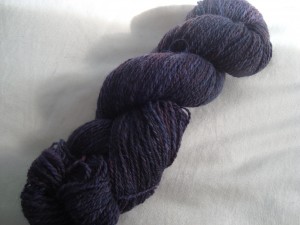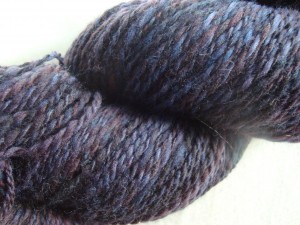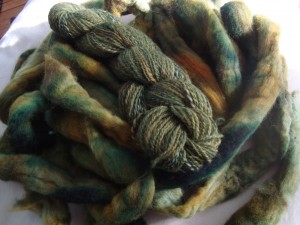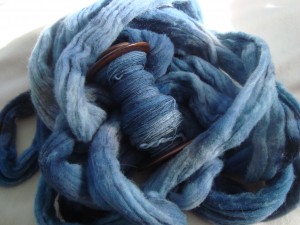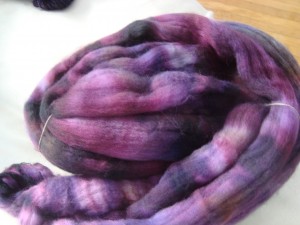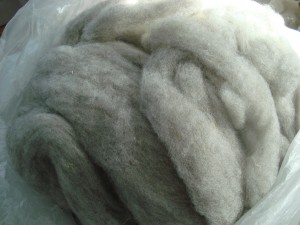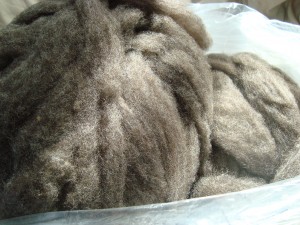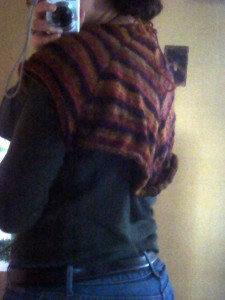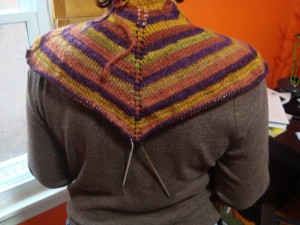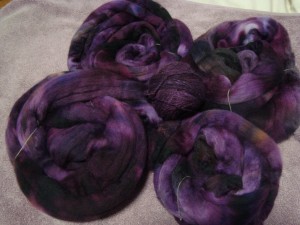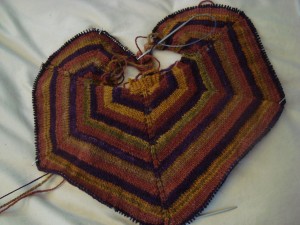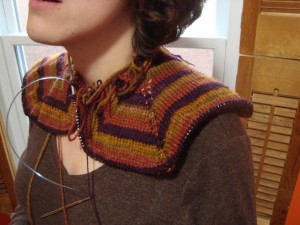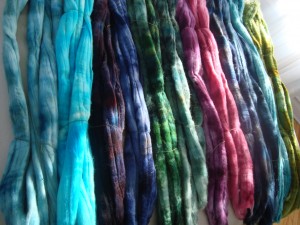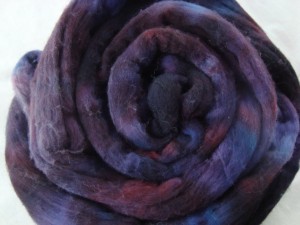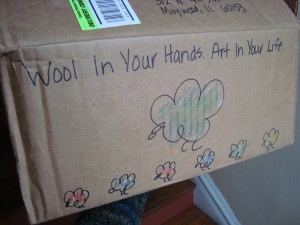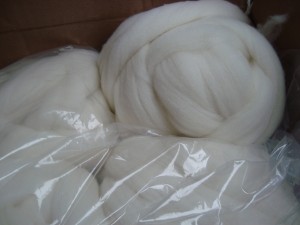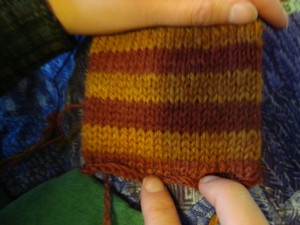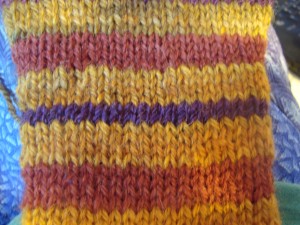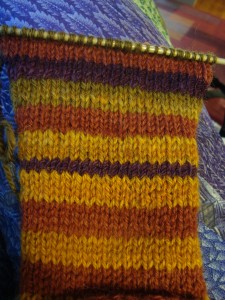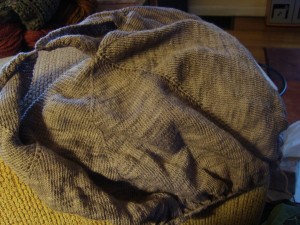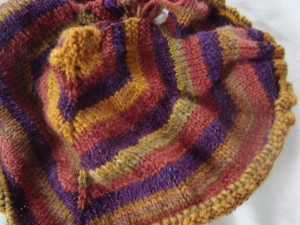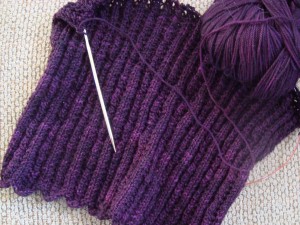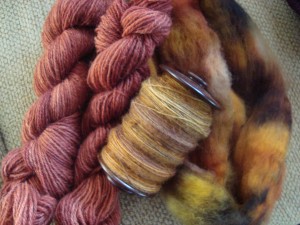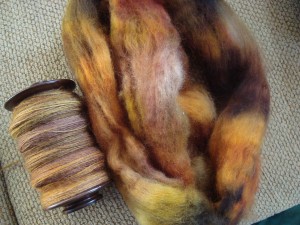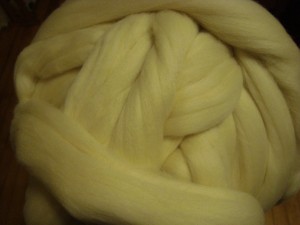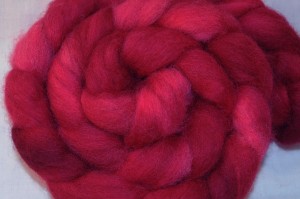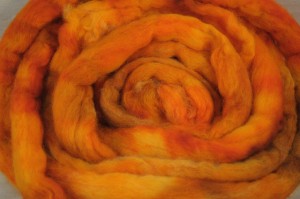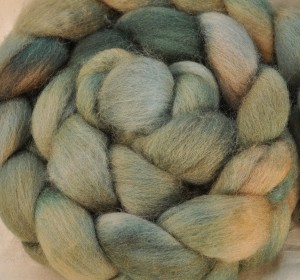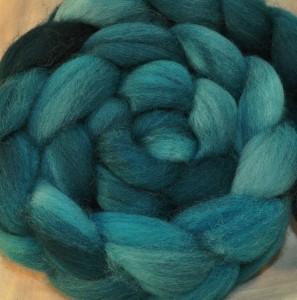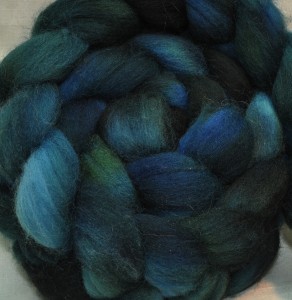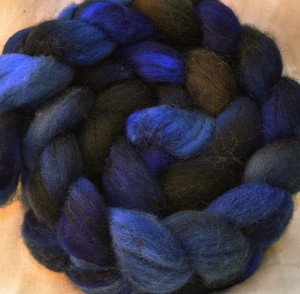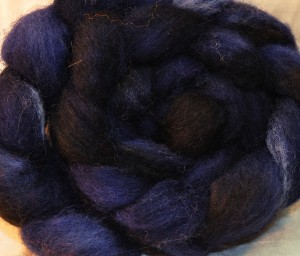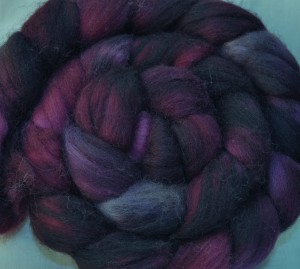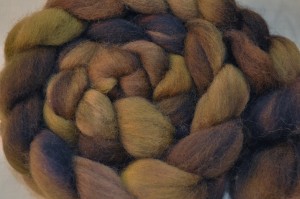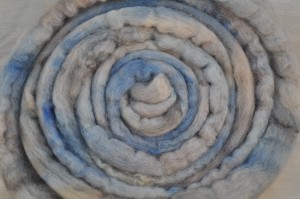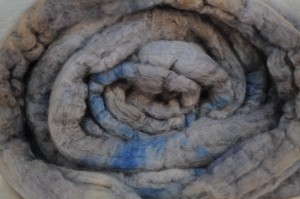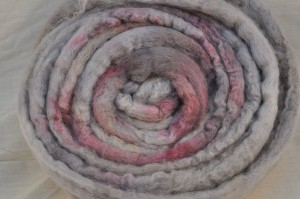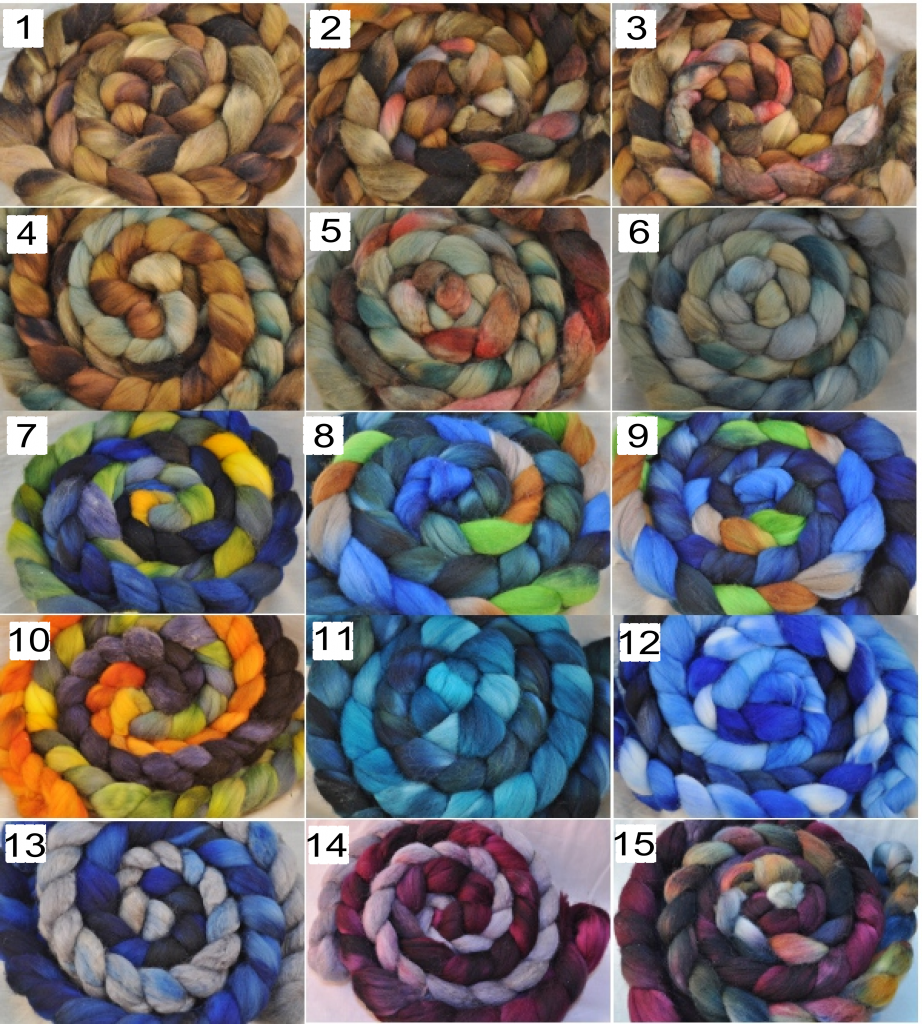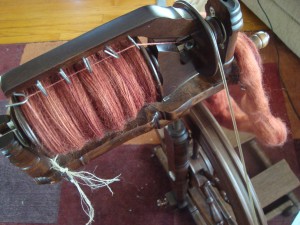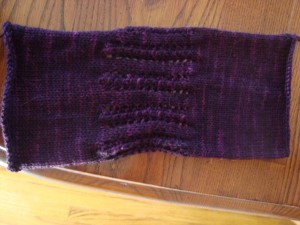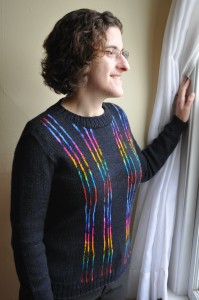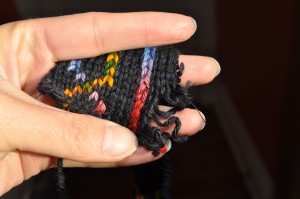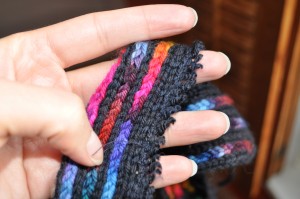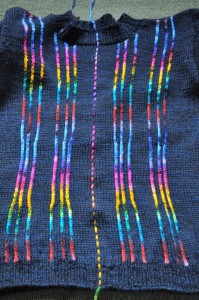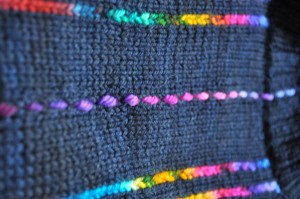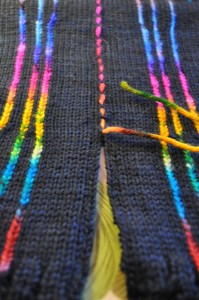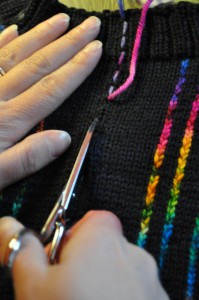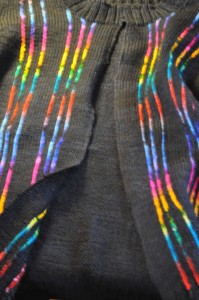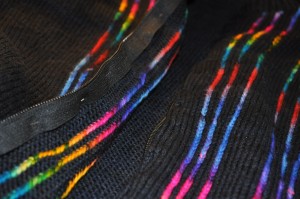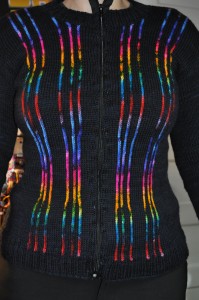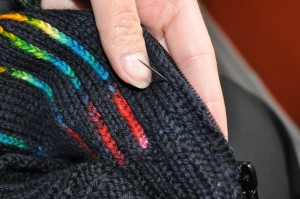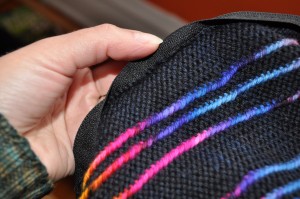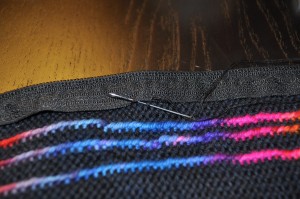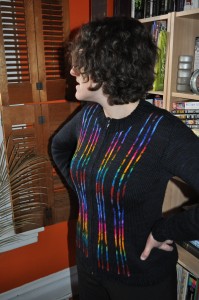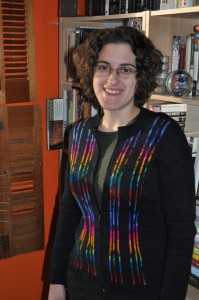Tue 31 Jan 2012
One of the side effects of me having more time on my hands (or even the suggestion that I might have more time on my hands, whether or not it materializes), is a sudden proliferation of project ideas that all want to be Done! Right now!
I have lists and lists of patterns and knitting and spinning and weaving, and all kinds of other things swimming around in my head, and it’s getting hard to hear in here. In the interests of brain space, I thought it might be helpful to make a list.
This first one is kind of a cheat, because it’s already done. This is the Targhee I’ve been spinning up to test the fiber before ordering some for the shop. I didn’t have to get all the way through the skein before I knew that the answer was “yes.” Unfortunately, I decided that I wanted 10 lbs right around the same time that they ran out of fiber, so I’m on a waiting list for the next bunch off of the mill in a month or so. In the meantime, I’m petting this skein.
The targhee is a fine, crimpy fiber, a lot like polwarth but with a little more bounce. It has great loft, which led to me getting a medium fingering weight yarn instead of the laceweight I was expecting. I’m still having a hard time breaking through that barrier; I am spinning yarns with less and less twist and loftier and loftier fibers at the same time as I try to make my yarn finer, and the final product is ending up just about the same. Fortunately, I can think of lots of things to do with fingering weight yarn, so this isn’t really much of a problem. I ended up with 452 yards from my 4 oz of top, compared to 214 and 316 from Finn and Falkland, respectively, spun from the same amount of fiber in a two-ply of roughly the same weight. Just goes to show that your yardage all depends on your spinning and the fiber.
This Targhee preparation has a lot of loft left in the top; sometimes wool gets kind of beaten into submission in a commercial preparation and you end up with almost no bounce left. I don’t know if it’s the processing or the fiber, but this one definitely stays bouncy all the way through the dyeing process, which helped with keeping a lot of air in the final yarn. Here you can see how fluffy it was, even before setting the twist:
The next project in the list is an old project that got pushed aside by some of these newer upstarts. (Kids these days.)
I still have quite  a bit of green left to spin for the fall colors sweater (next in line to cast on, as soon as I clear a couple of other projects off the needles). This isn’t too urgent, since I won’t need the green right away in the design, but I want to get it done so that the yarn is all ready when I need it.
First, though, I’ve been working on spinning up another shop test sample.
This is the Rambouillet, and it will also definitely be making its way to the shop as soon as possible. I haven’t heard back yet about quantities and prices, but we should be able to get some soon.
I’m spinning this up as a worsted-to-heavy three ply, destined to be a hat for Branden. And possibly some handwarmers. And maybe a scarf, depending on how long it keeps going. Remember what I said about the Targhee having a lot of loft left in the preparation? Well, it doesn’t hold a candle to Rambouillet. This is my first time working with this fiber, so it’s been really interesting to see how different it is from other wools I’ve spun.
The best word I can think of to describe it is “spongy.” In a very, very good way. This is the most aggressively lofty fiber I have ever seen; dying it was more like kneading bread than working dye into fiber. Usually I just tap on the surface of the wool with the tips of my fingers to get the dye all the way into the fiber. But the Rambouillet required full hand squeezing, and lots of it…my muscles were actually tired after wrangling color into a pound of Rambouillet. I was a bit worried about felting it, but it came out beautifully despite the abuse. The one thing I haven’t loved about it is that it can be hard to spin fine; the sponginess makes it a little harder to draft down evenly to a lace or fingering weight. I’ve been spoiled by not really needing to predraft my other fibers and ended up with a slightly bumpier yarn. That could be managed by more predrafting and not spinning long draw, but I decided to give in to the fiber and head for a heavier weight yarn for this first test run.
Next up is the new fiber for the current sweater (which needs a name that isn’t just “the striped shawl sweater”). This is way down the list in chronological order, but may need to move up to the front of the line so that I can actually finish the sweater.
And then, there’s a long-term project that I realistically won’t get to until sometime this summer.
This is some Shetland that I bought two summers ago at Wisconsin Sheep and Wool. I bought it to make a sweater for me, and it just keeps sliding further and further down the list. I didn’t have a clear idea of what I wanted to make with it, so I couldn’t start spinning the yarn until I knew at least what weight of yarn I wanted. There were a couple of ideas beginning to take shape, and then at Christmas, a friend was admiring Branden’s McGyver sweater. And admiring in a way that actually values the work that goes into making it. That’s one thing I really can’t resist, so I think that this will end up being spun up for a sweater for him, hopefully in time for next Christmas, though it will involve some espionage to figure out the measurements that I need. (We may need to enlist an accomplice for that part.) It’s very low pressure in terms of time, but it’s an important one to keep on the list, and I’d like to get to it soon.
And finally, last but not least, we have this:
That’s the fleece that Ellen and I bought at Rhinebeck and sent out for processing. I forget the breed* (at the time, I was too enamored with the color to notice much else), but it is beautiful wool, and the processing was beautifully done. It arrived last week, and I can’t wait to spin it! This is still in the simmering stage; I’m not sure what I want it to become, so I think I probably have a little while before this one jumps onto the wheel. I’m not sure if I’ll have enough for a sweater, but there’s a simple cabled cardigan kind of lurking in the background of my brain…
So there you have it. The spinning queue. That ought to keep me busy for a while, don’t you think?
*Edited to add: I’ve just gone back and actually read the Rhinebeck post, and the fleece is a Corriedale cross from Lisa Lafferty at Eidelweiss Farm. Yay for the blog record!
